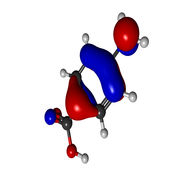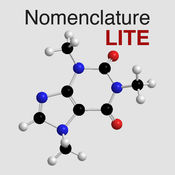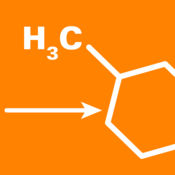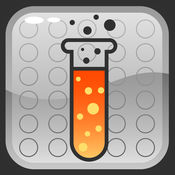-
Category Education
-
Size 23.7 MB
Chemistry By Design is an interactive virtual flashcard that allows students to test their skills using known synthetic sequences. The goal is to display the reagents, starting materials and products for every single step used in constructing a natural product or pharmaceutical. Students are provided with different browsing options to test themselves.
Chemistry By Design: Target Synthesis Database alternatives
WebMO: Molecule Editor, Viewer, and Computational Chemistry Interface
WebMO allows users to build and view molecules in 3-D, visualize orbitals and symmetry elements, lookup chemical information and properties from external databases, and access state-of-the-art computational chemistry programs. WebMO is recommended for students and faculty in high school, college, and graduate school who desire mobile access to molecular structures, information, and calculations. WebMO capabilities include:- Build molecules by drawing atoms and bonds in a 3-D molecular editor, or by speaking the name (e.g., aspirin)- Optimize structures using VSEPR theory or molecular mechanics- View Huckel molecular orbitals, electron density, and electrostatic potential- View point group and symmetry elements of molecules- Lookup basic molecular information, including IUPAC and common names, stoichiometry, molar mass- Lookup chemical data from PubChem and ChemSpider- Lookup experimental and predicted molecular properties from external databases (NIST, Sigma-Aldrich)- Lookup IR, UV-VIS, NMR, and mass spectra from external databases (NIST, SDBS)- Capture high-resolution molecular images- Save and recall molecular structures locally- Export and import structures via emailWebMO is also a front-end to WebMO servers (version 14 and higher):- Supports Gaussian, GAMESS, Molpro, MOPAC, NWChem, ORCA, PQS, PSI, Quantum Espresso, VASP, Q-Chem, and Tinker computational chemistry programs- Submit, monitor, and view calculations- View formatted tabular data extracted from output files, as well as raw output- Visualize geometry, partial charges, dipole moment, normal vibrational modes, molecular orbitals, and NMR/IR/UV-VIS spectra
-
rating 5.0
-
size 19.5 MB
Learn Organic Chemistry Nomenclature LITE
Learn Organic Chemistry: Nomenclature LITE will help you master the naming of organic compounds. It features clear, concise, interactive lessons on how to name the compounds commonly encountered in an organic chemistry course. If you have questions or suggestions contact us at:[email protected]
-
size 8.3 MB
Learn Chemistry, Organic Chemistry and Biochemistry via Videos by GoLearningBus
* * * * * GoLearningBus: A complete education journey from school, college to professional life * * * * * More than 4 million paying customers from 175 countries. Get on the GoLearningBus today and take a complete education journey from school, college to professional learning. Lifetime of free updates Please write to us at [email protected] for any query and your valuable feedback.
-
size 37.0 MB
ReactionFlash
Want to refresh your memory on named chemical reactions before an exam or a group meeting? Get all the details with ReactionFlash as a great way to learn named reactions, understand their mechanisms and view examples published in peer-reviewed literature. Reaxys and ReactionFlash are trade marks of RELX Intellectual Properties SA, used under license.
-
size 55.0 MB
Chemistry Formula Practice Free
Chemistry Formulas Practice stimulates students mastery of the fundamental skill of naming compounds and writing formulas. The practice categories include ionic and molecular compounds, acids, bases, polyatomic ions, hydrocarbons, and organic functional groups. Students may choose their pace as they work from formula to name or name to formula.
-
size 67.1 MB




